OK. I am back. This takes longer when I have to take the pics too. I am going to do a simple vine down the backbone of the knife. If the blade was thicker, I could do a vine and thorn or an arrowhead design, but I will save them for another day. If you have never done one before, practice on a scrap piece first to get the feel of it. Here a the tools that I use for that. A triangle file, chainsaw files, a small flat file and an improvised vice to hold the blade while I work. I had to move in the house for this because it is too cold in the shop.
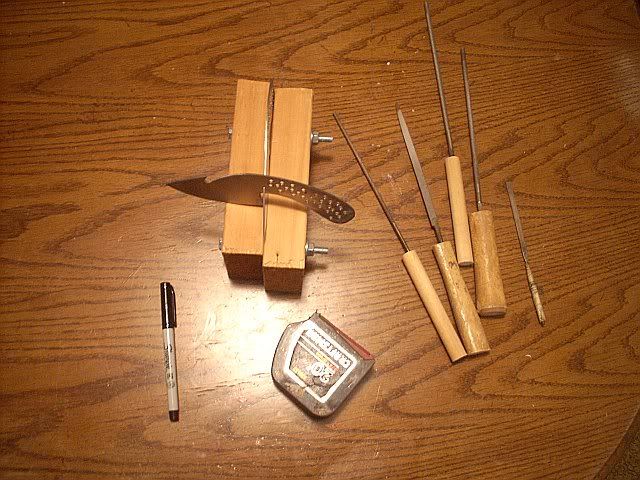
I mark the blade in 1/4" increments. Most designs use the same measurement.
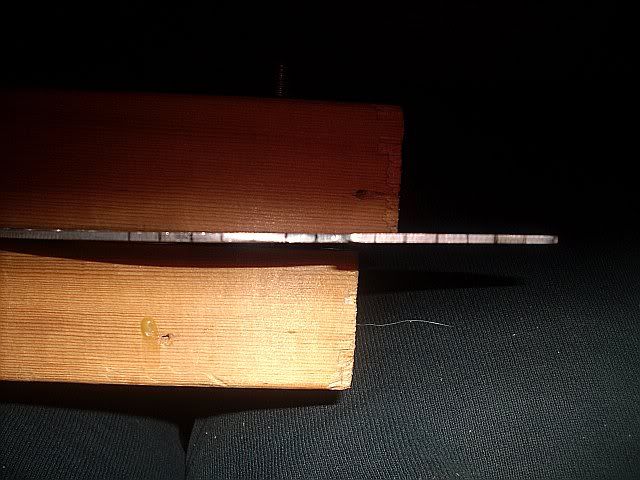
I use the triangular file just to put in the inital notches, so the round file won't slide all over the place. Pick one side to start and notch every other one. Turn it around and do the other side. Then switch to a small chainsaw file. Try to keep it at around a 20 degree angle and file almost to the opposite edge of the knife. I try to get mine to where it almost touches the other side.
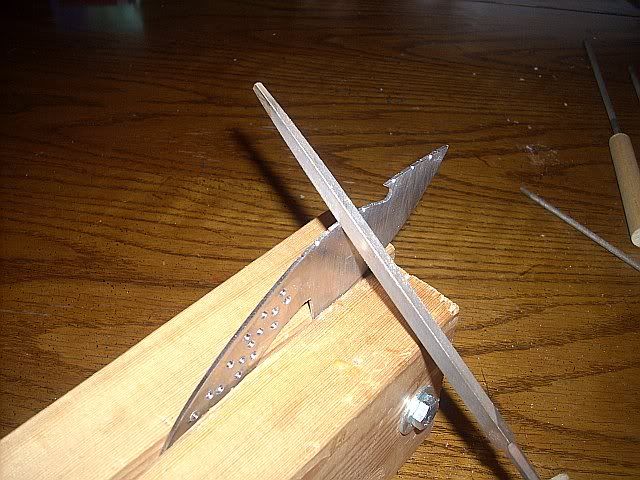
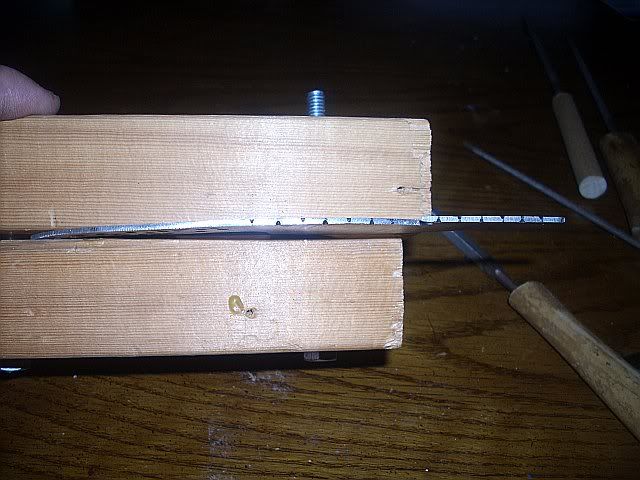
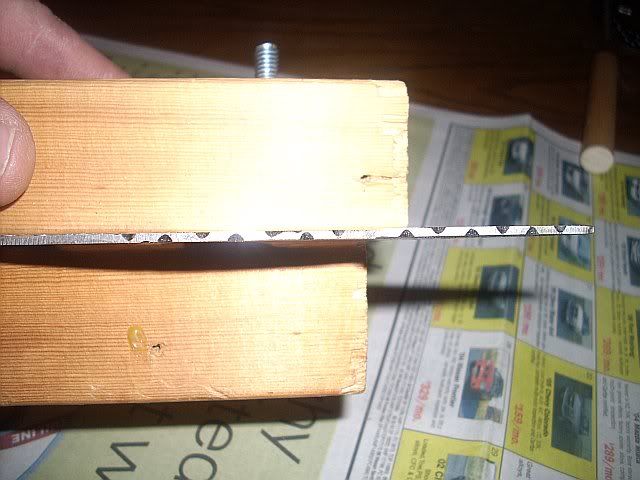
If you take it too far across the blade, a few swipes with a bastard mill file will cur the problem, then you just have to reshape the notches.
I lost some pics here. I think it had something to do with a 13 year old deleting them. Oh well. I will explain it anyway. I use a large chainsaw file to make the notches wider and then switch to the flat file and round off the shape edges. The blade is only 1/16" thick, so I was cutting it close with the files.

There will be some minor ut-ohs and scratches, but some 150 grit sandpaper wrapped around the file will take care of them. Because of the hook on th blade, I could not run it across the grinder like normal, so I free handed the bevel for the edge. I usually try to leave a flat edge roughly 1/64" wide. During the buffing part, when I use a leather buffing wheel and some buffing compound, the edge will form. Now on to the heat treating and tempering.
OK, nobody tell my wife what I use the kitchen for, if she finds out, I will never hear the end of it. For this crutial step, I run one of the large stove burner on high. This is not hot enough to get the blade to around 1500 degrees, so I use a map gas torch and the burner together. That will take it to a non-magnetic state. The first pic is of the shop foreman making sure everything is being done correctly.
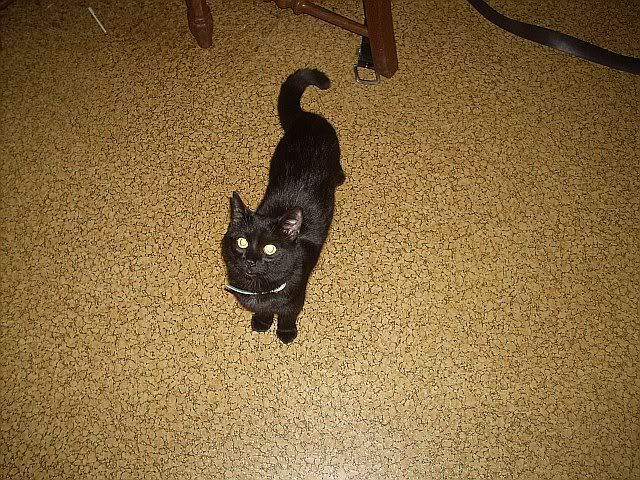
Once it gets hot enough for the magnet not to stick, I hold the temp for a minute to make sure it will be an even heat treat. I had to skip the pick of all that. It was hard to hold a camera, a torch and pliers with a magnet. This pic does not show how red it really was. i think the flash canceled it out.
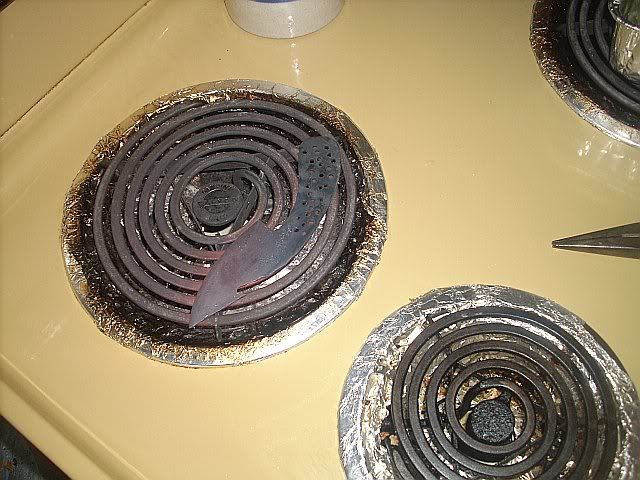
Next it will be quenched in vegatable oil that is about 130 degrees for 1 minute. If you have made it this far with no file work and decide you want it on there, you can do a differential quench. Just dip the edge of the blade in, leaving the backbone out of the oil. It will leave the backbone softer and easier to file.
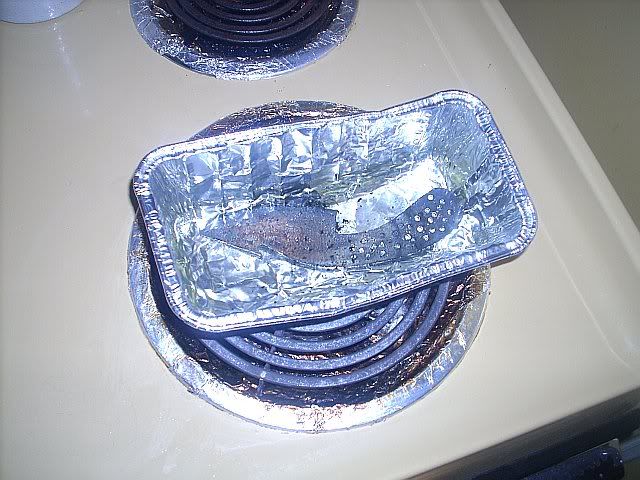
Then I wipe the oil off the blade and throw it in the oven at 375 degree for one hour. Do yourself a favor and lay it on some aluminum foil first, that way there are no knife shapes burned into the wifes' favorite cookie sheet. It will come out black and a little flaky but some 120 grit sandpaper will take care of that. If you don't wipe it down, the oil congeals on the blade and forms a very sticky mess that is a pain to get off.
I changed the temper temperature mentioned above. It will vary from steel to steel, 375 degrees being more common.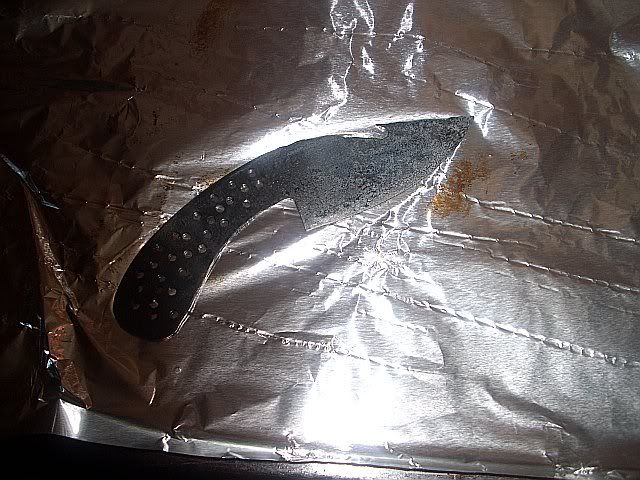
Tomorrow, I will cut out the handles and glue them on and do the final shaping.